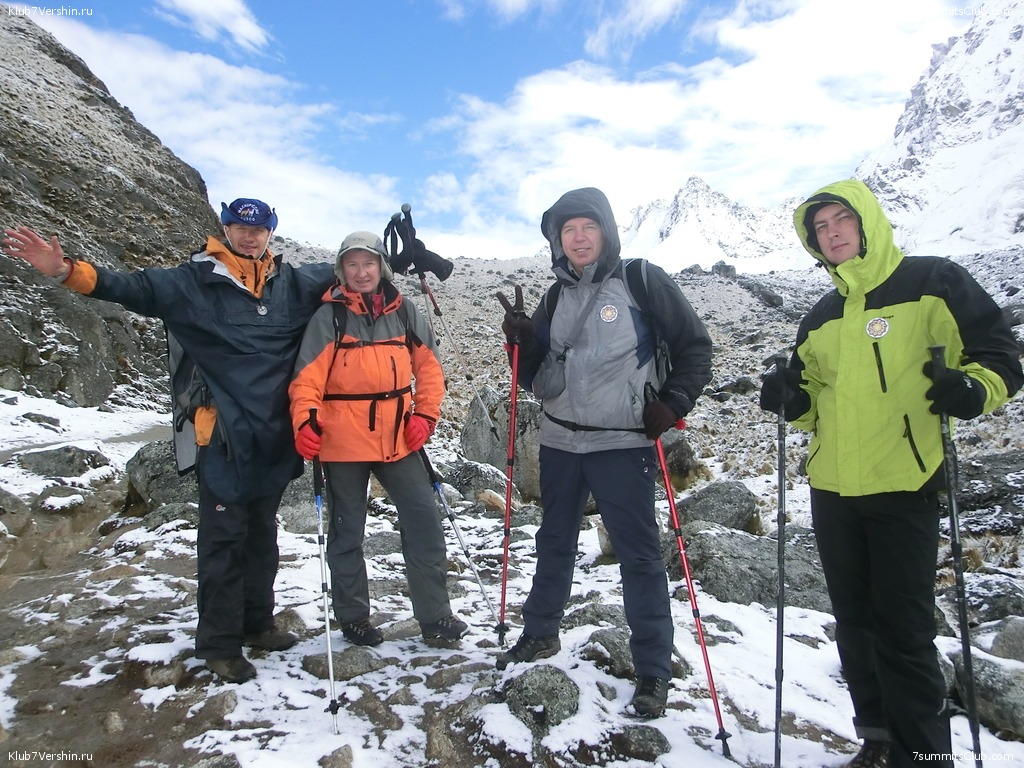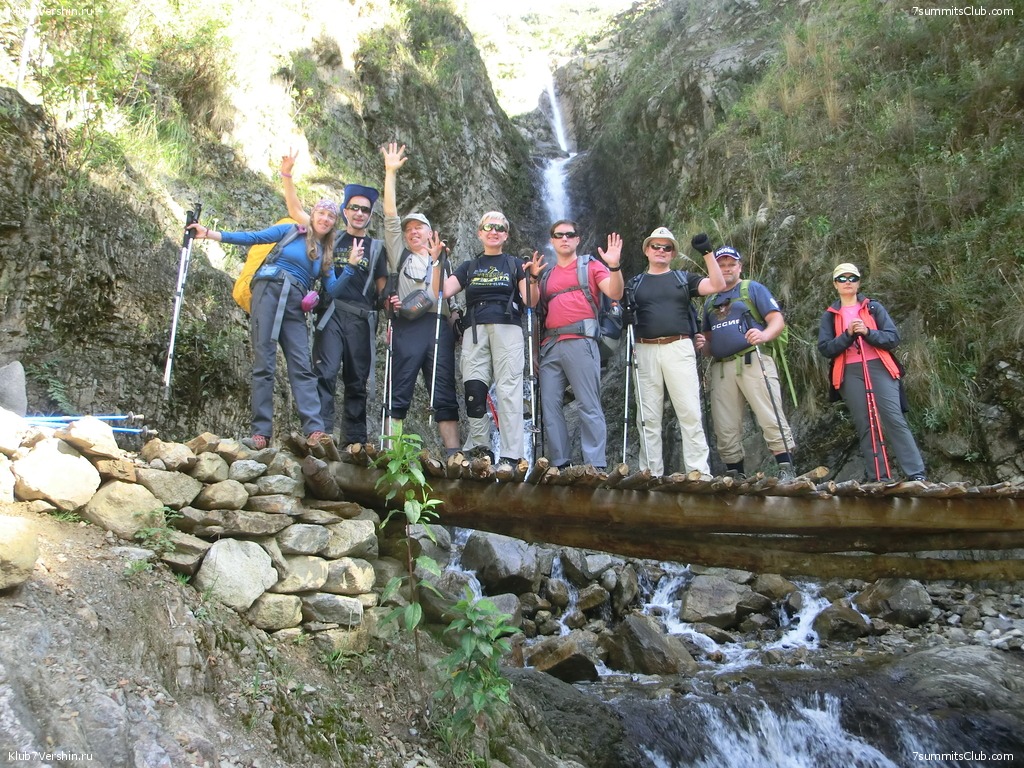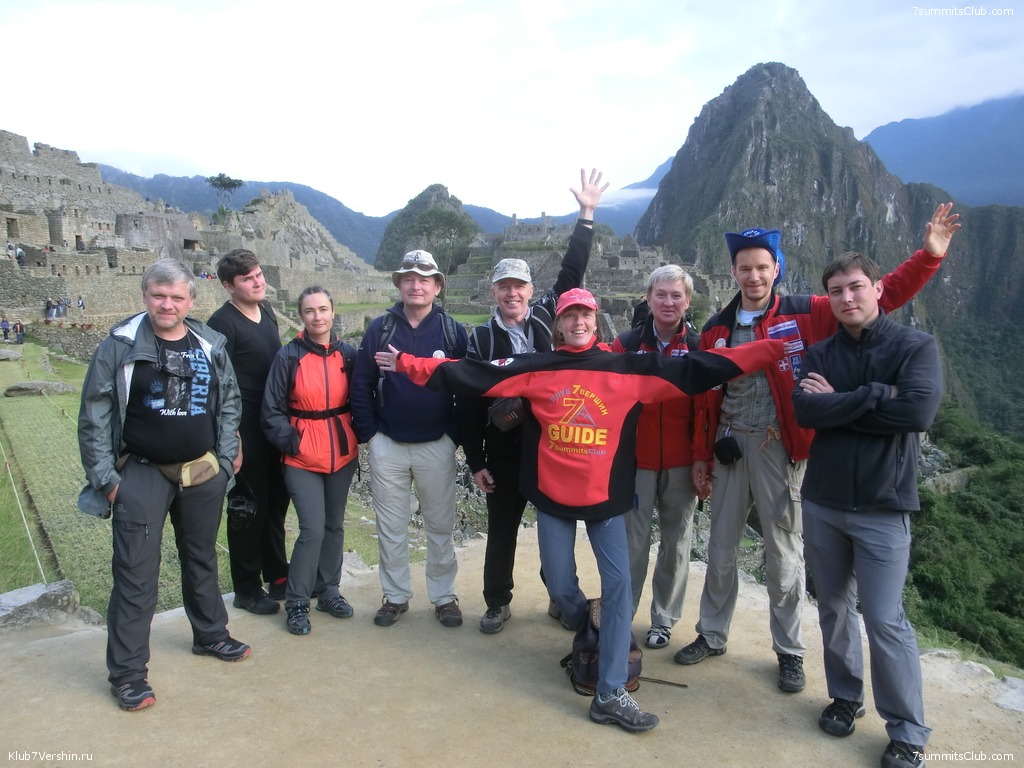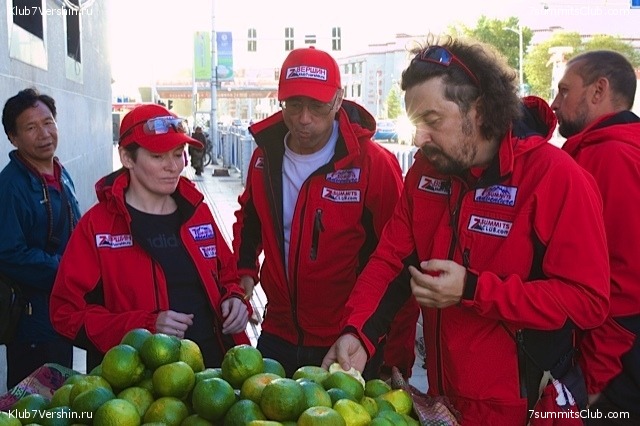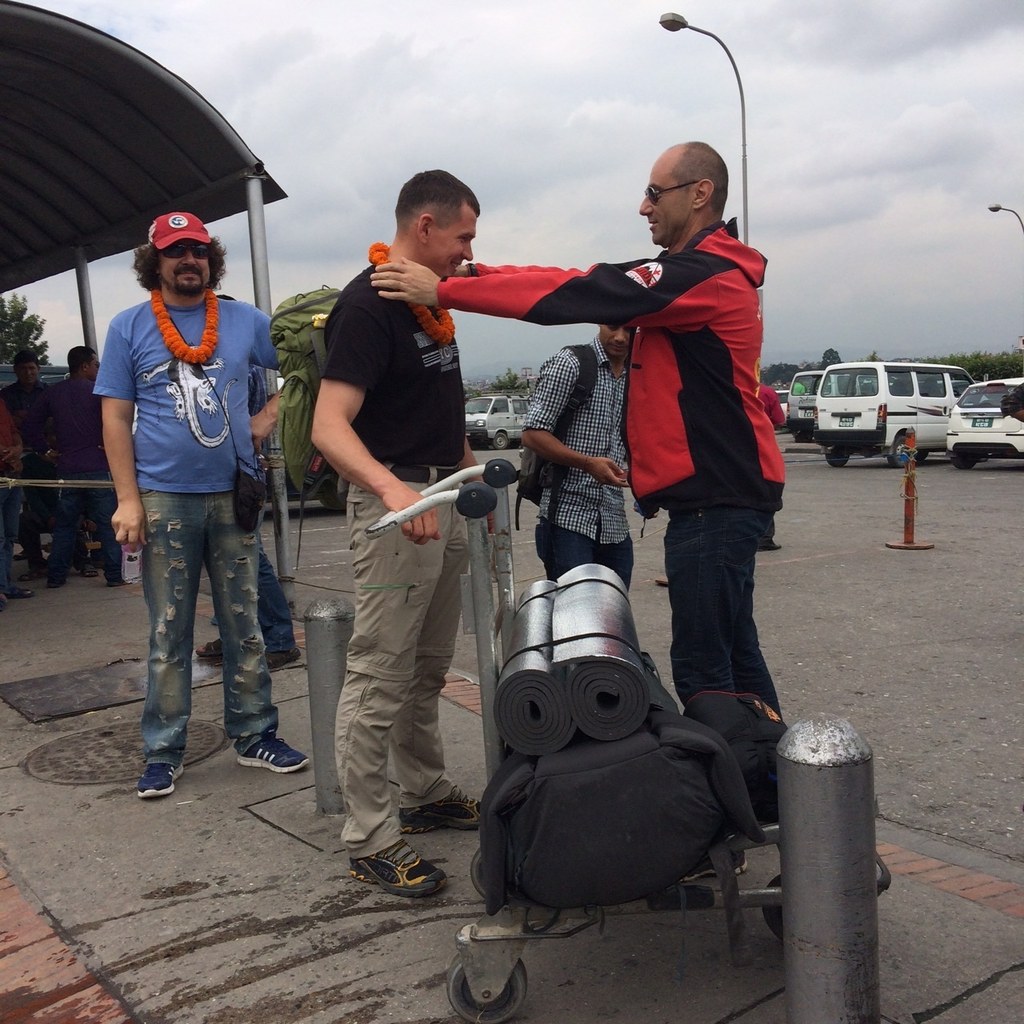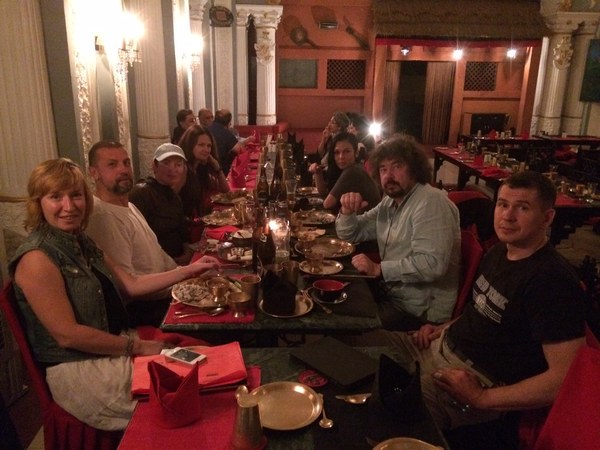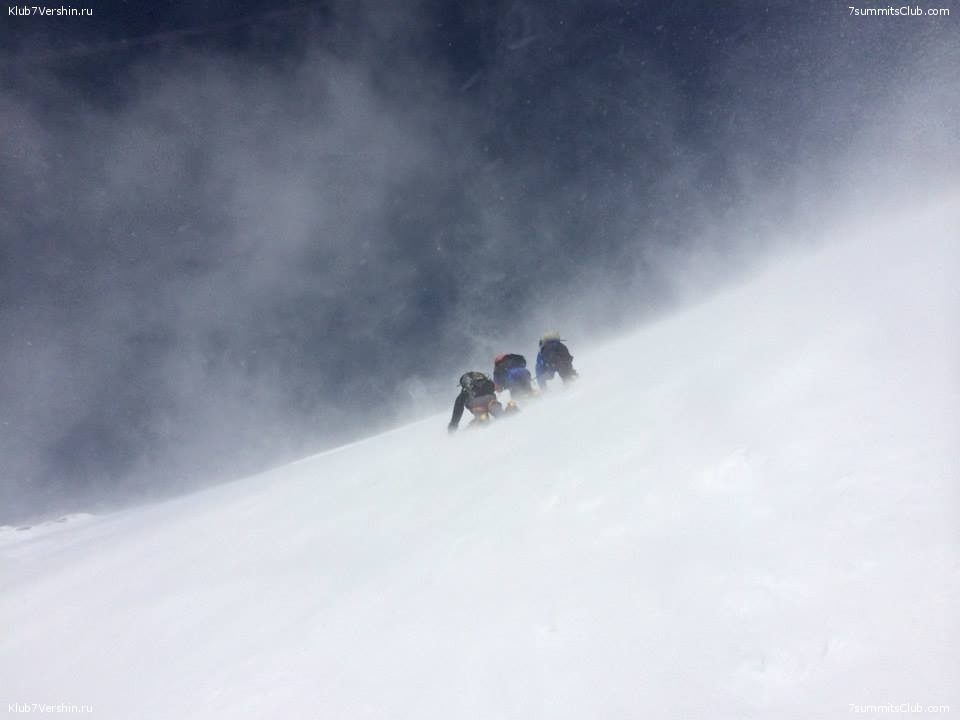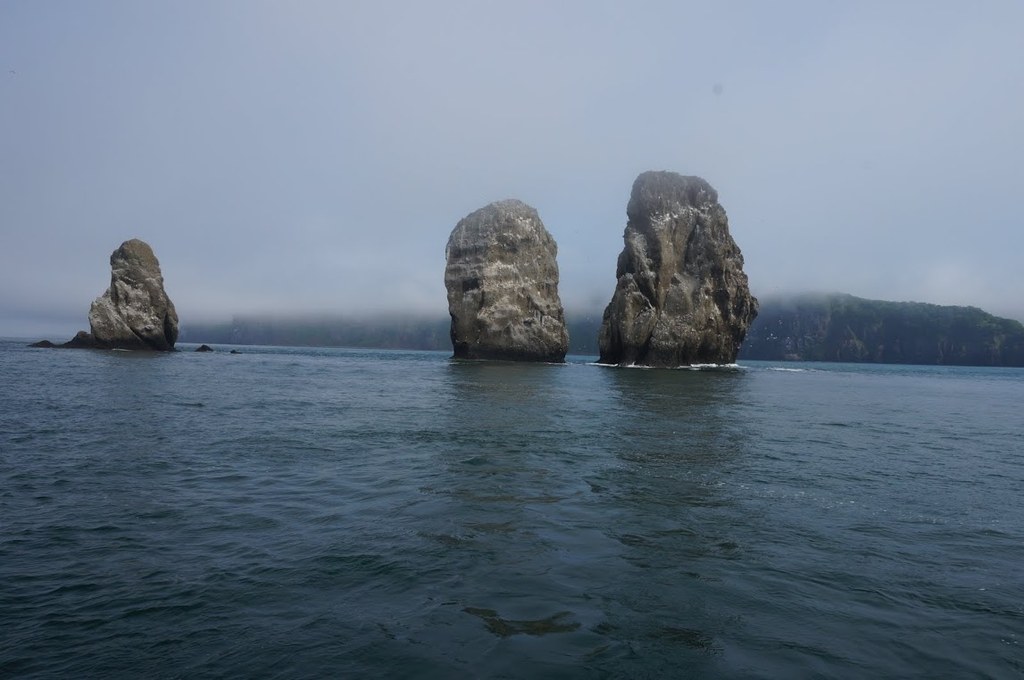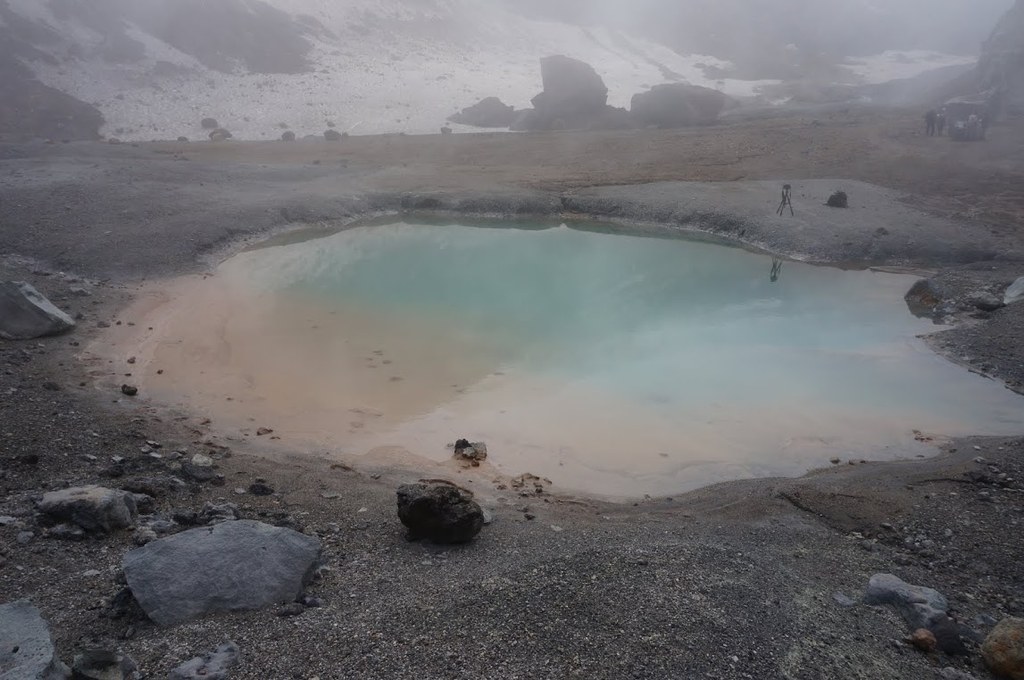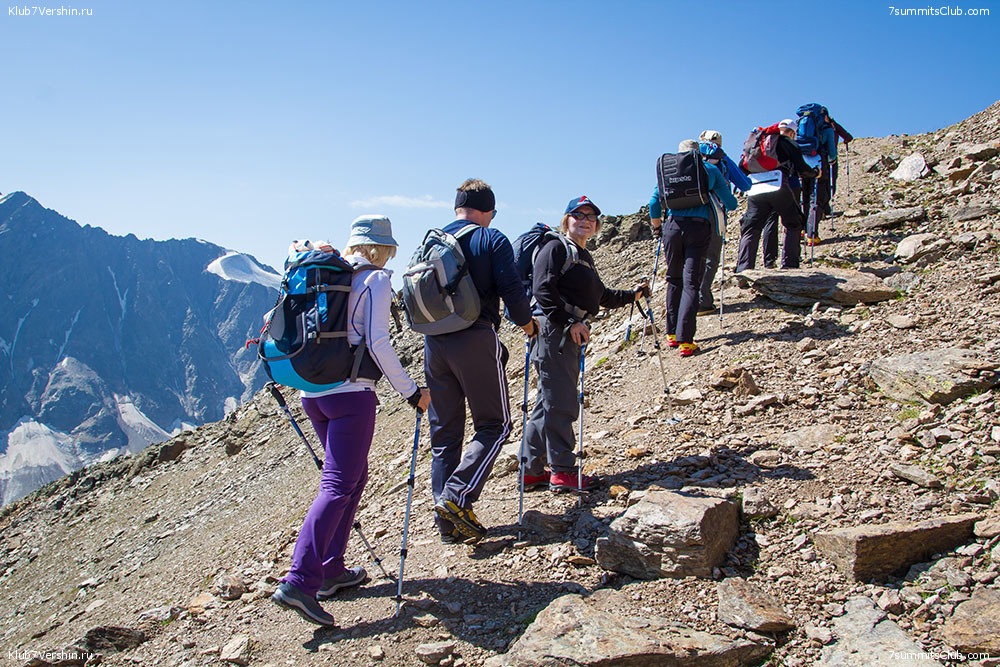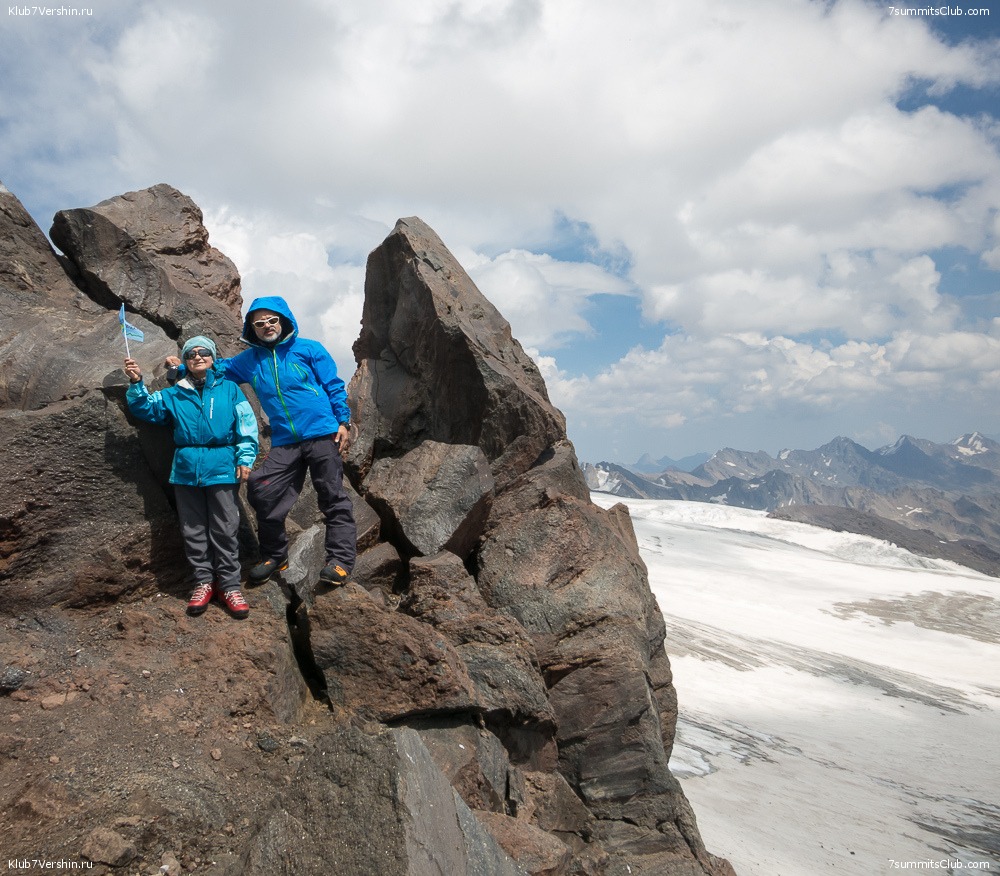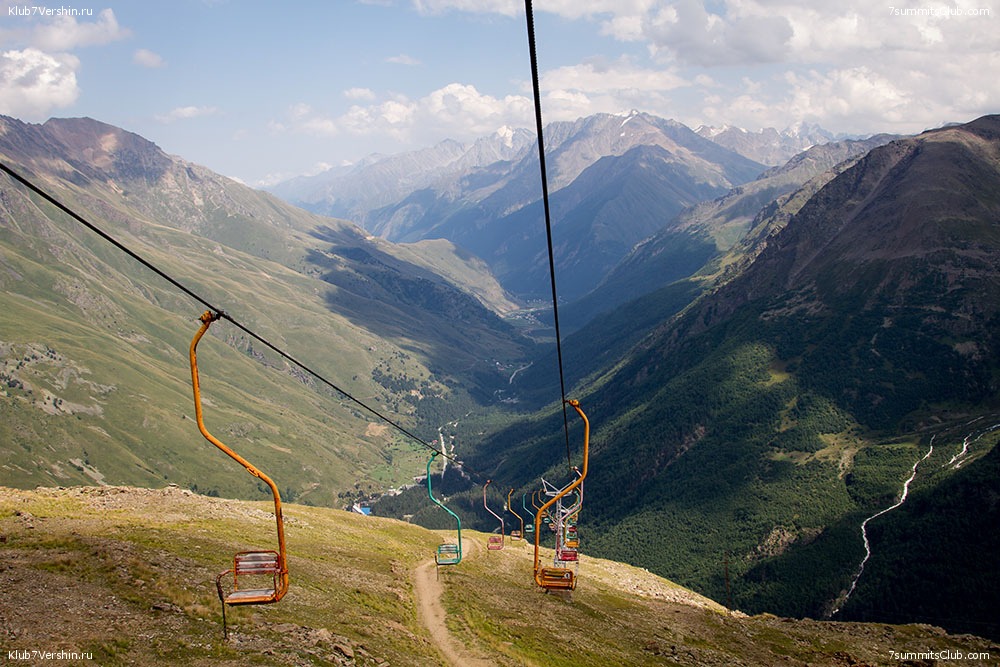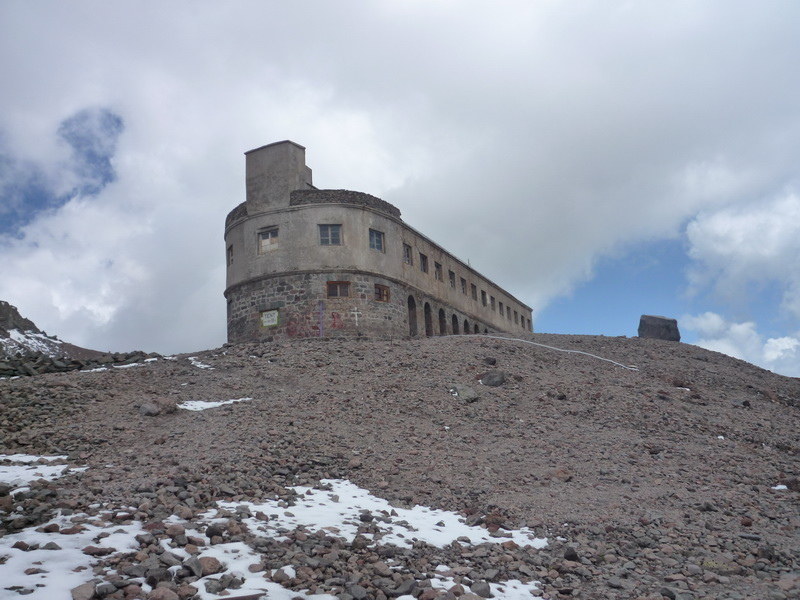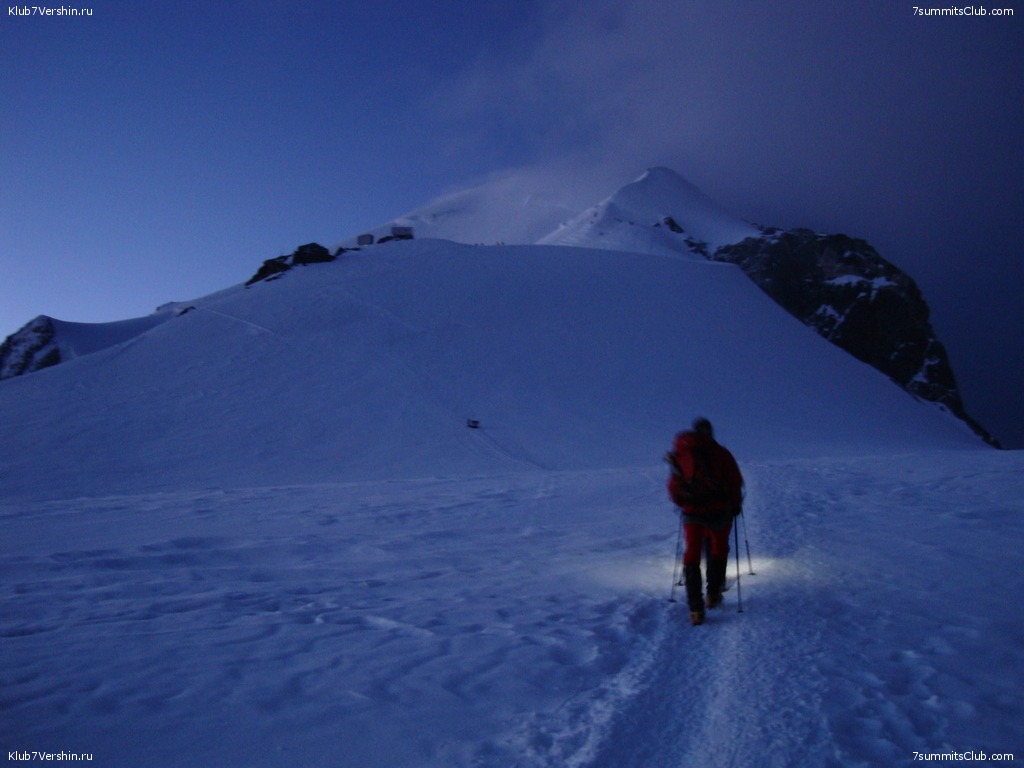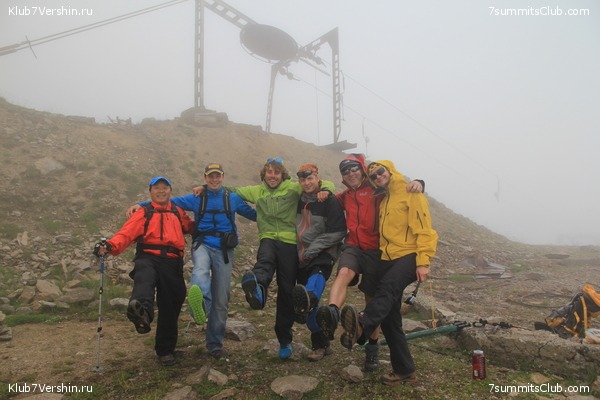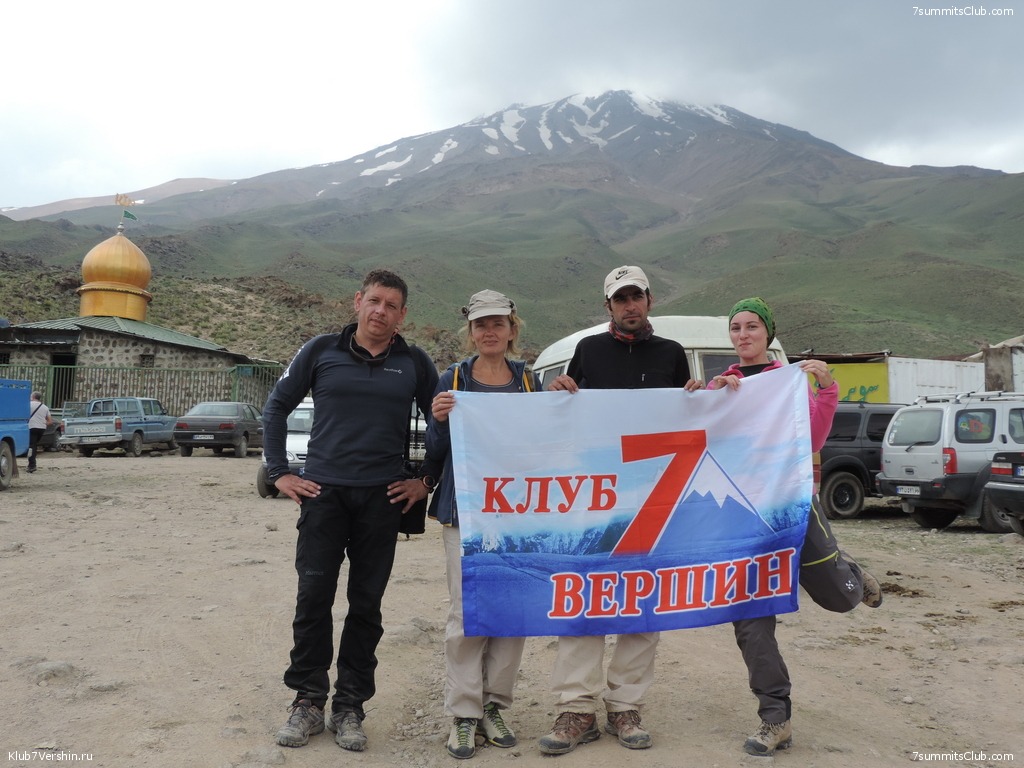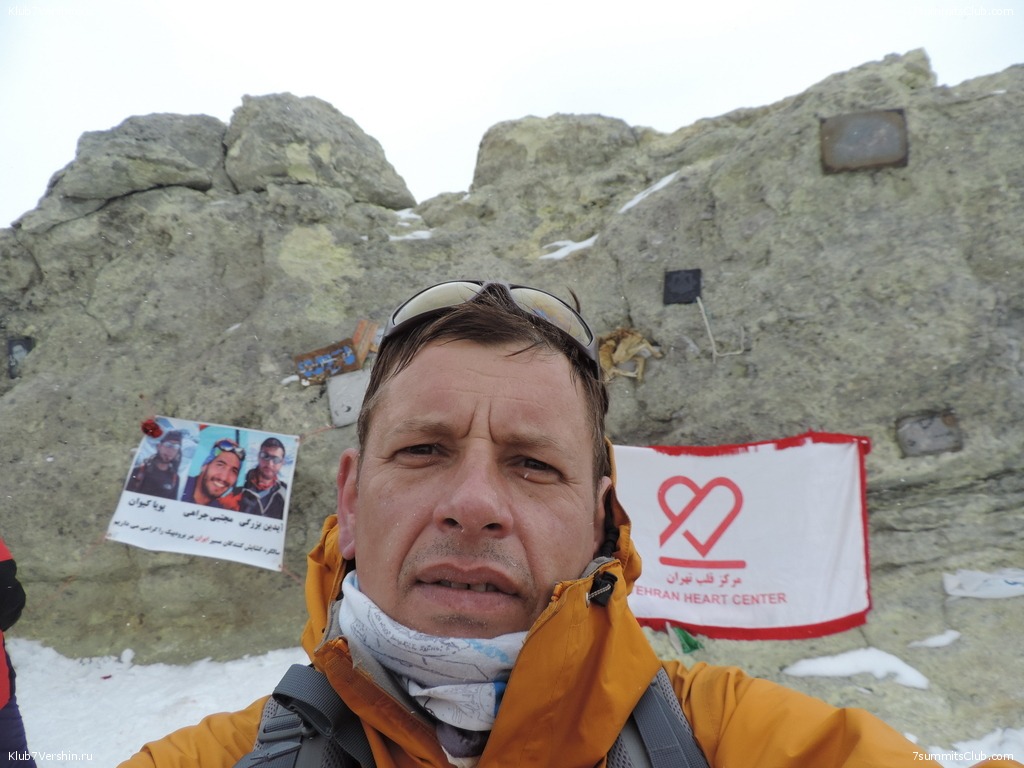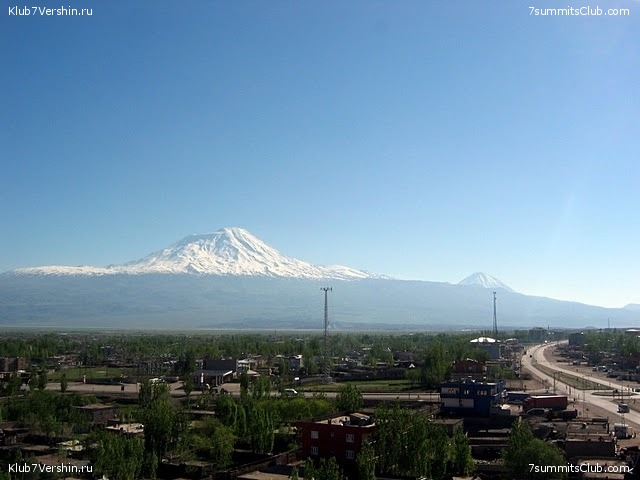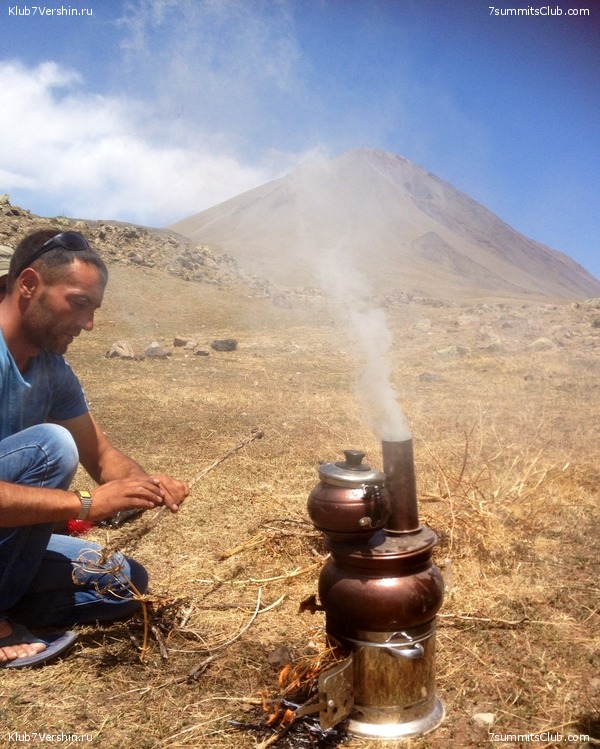All news - Page 267
Trekking in Peru
Hello! This is Lubov Pershina from Peru. The group from Nizhny Novgorod " Club Parallel " today flew to Russia. Yesterday, September 13, we had an interesting morning. We flew over the famous Nazca lines - the mysterious giant drawings on ...
Hello! This is Lubov Pershina from Peru. The group from Nizhny Novgorod " Club Parallel " today flew to Russia. Yesterday, September 13, we had an interesting morning. We flew over the famous Nazca lines - the mysterious giant drawings on the surface of the desert, called the Pampa de Nazca. For 10 days we were involved in trekking in the mountains, visited the ancient city of Machu Picchu, sailed on boats on lake Titicaca. A lot of impressions! All team members are happy. Everything ended successful.
Lubov Pershina, a guide
Alex Abramov from Lhasa
Hello! Alex Abramov almost from Cho Oyu :) While climbing we in the city. We are eating, watching, eating again. In General, it is an acclimatization, baby. There was a meeting with the Minister of Sports of Tibet Mr.Dava Tzering. We agreed ...
Hello! Alex Abramov almost from Cho Oyu :)
While climbing we in the city. We are eating, watching, eating again. In General, it is an acclimatization, baby. There was a meeting with the Minister of Sports of Tibet Mr.Dava Tzering.
We agreed next year to take command of the Tibetans on Elbrus. And the Tibetans will take the Russian team at the Northern Summit of Mount Everest - Changtse.
Tomorrow we are going higher. Already at 3, 900m.
Vladimir Kotlyar, Natalia and Igor Smirnov are descending from the summit of Mount Elbrus
Elbrus.
Guide 7 Summits Club Vladimir Kotlyar: ... Yes, we are going down, descending from the top. This is Vladimir Kotlyar. The weather is perfect, the views stunning. The main Caucasian ridge is visible in all its glory. Everything was ...
Guide 7 Summits Club Vladimir Kotlyar:
... Yes, we are going down, descending from the top. This is Vladimir Kotlyar. The weather is perfect, the views stunning. The main Caucasian ridge is visible in all its glory. Everything was wonderful. We went perfectly. There left a little bit and we will be in the camp. All the best! Thank you, see you soon!
Expedition of the 7 Summits Ñlub on Cho Oyu arrived in Lhasa
Hello! This is Alex Abramov from Lhasa. Here, of course, a perfect connection. And the city just blossoms and each of my visits, even once every six months, something changed. Now at the entrance to the city there are about 100 cranes and ...
Hello! This is Alex Abramov from Lhasa. Here, of course, a perfect connection. And the city just blossoms and each of my visits, even once every six months, something changed. Now at the entrance to the city there are about 100 cranes and build some huge complex... the plan we visit .... the Palace of the Dalai Lama and some trekking through the surrounding peaks. We all feel well. And then, I hope, will not be worse. Best regards!
Departure from Kathmandu
Arrival in Lhasa
Alexander Abramov reports about the beginning of the expedition on Cho Oyu. PICTURES
Hello! This is Alex Abramov from the eternal city Kathmandu. This expedition on Cho Oyu, the peak with height 8201 meters. Now our expedition begins. Yesterday almost all the participants of the expedition came to Nepal. It: ...
Hello! This is Alex Abramov from the eternal city Kathmandu. This expedition on Cho Oyu, the peak with height 8201 meters. Now our expedition begins. Yesterday almost all the participants of the expedition came to Nepal. It: Catherine Pozdeeva (Khanty-Mansiysk), George Kuzmin (Moscow, Russia), Anatoly Mensky (Tyumen), Cyril Muraviev (St. Petersburg) and Oleg Pimenov (Latvia, Russia). Another member of the expedition Eugeny Voronov (Perm) will join the group on the 13th of September. Now we arrange questions with equipment and going to look at cultural values Nepal, Patan city. I also want to say that our office in Kathmandu greeted us very warmly. And this year they have so many different groups.....
SUMMIT! Elbrus for a group of Vitaly Simonovic Elbrus. Congratulations!
Elbrus.
Hello! Alexander Abramov calls from the best, perhaps, in the Elbrus mountain, refuge-shelter named LeapRus. Today our team reached the summit of Mount Elbrus. This is the team Vitaly Simonovich. It consisted of 11 members and 4 guide. As a ...
Hello! Alexander Abramov calls from the best, perhaps, in the Elbrus mountain, refuge-shelter named LeapRus. Today our team reached the summit of Mount Elbrus. This is the team Vitaly Simonovich. It consisted of 11 members and 4 guide. As a result, three guides and eight members reached the summit. One of the guides pulled down three women from this team.
And the weather was terrible, on top we spent literally two minutes. Generally, in principle, in this weather you should not go up. But there was a great desire to raise people and to introduce them to climbing.
And we went down to the shelter just in 3. 30 p.m.. With that, we started climbing at 4 a,m,. That is, it is practically 12:00 it lasted. Once again, a strong wind in the afternoon, closer to the top, the snowfall began. Visibility was about 10 meters, and can be less. But it is only in the area of the top, below the saddle was all fine.
The guys all are happy, everyone is happy, thank us. In general, everything is fine ...
Tomorrow we have in the Terskol village, our office organizes, holiday season closing for the guides. Invited all our members climb Elbrus.
And I will say that the shelter LeapRus - this, of course, some fantastic tale. I can not believe that we live here. That all, good-bye!
Photos from the expedition to Kamchatka. Author: Marina Nagel
The tour program is very informative, rich and varied, introduces in the short term with the most outstanding tourist facilities in Kamchatka. Marina Nagel visited with a group of unique places of Kamchatka - active volcanoes Avachinskiy ...
The tour program is very informative, rich and varied, introduces in the short term with the most outstanding tourist facilities in Kamchatka. Marina Nagel visited with a group of unique places of Kamchatka - active volcanoes Avachinskiy and Mutnovskiy, which are some of the most beautiful volcanoes of Kamchatka. The group also made a boat trip on Avachinskaya Bay and the Pacific Ocean, white water river on the Bystraya river, which takes place among the majestic mountains of the Middle Ridge.
And they are bathed in natural hot springs and pools with thermal waters…
Vladimir Kotlyar with his group at the top of Kazbek - a report!
Greetings to all! Vladimir Kotlyar, climbing program Kazbek, from Georgia. We are now at the top of Kazbek. The weather is ideal, the wind a bit strong, but overall, it's okay. Excellent visibility, beautiful scenery, warm. Well, just - ...
Greetings to all! Vladimir Kotlyar, climbing program Kazbek, from Georgia. We are now at the top of Kazbek. The weather is ideal, the wind a bit strong, but overall, it's okay. Excellent visibility, beautiful scenery, warm. Well, just - super. We brought the flag of 7 Summits again on the top of Kazbek. All members of the team went up: two Michael, Alexander and Natalia.
Now after 10 minutes, we start for the descent. In general, the team is upbeat, it's okay. I would say the ideal climbing happened. Only to come down ideal too. That ‘s all, all the best!
News from Elbrus region: there is a new success on Elbrus!
Elbrus.
Today, another group of the 7 Summits Club led by guides Dmitry Semenov and Oleg Koshkarev climbed the top of Mount Elbrus. Five out of six members reached the Western Summit. Only one of them, because of the illness, decided not to make an ...
Today, another group of the 7 Summits Club led by guides Dmitry Semenov and Oleg Koshkarev climbed the top of Mount Elbrus. Five out of six members reached the Western Summit. Only one of them, because of the illness, decided not to make an attempt, and move it to the next year.
The second group goes to climb tonight. Alexander Abramov is going to go with them! The weather here is very windy and cold, so that successful ascent today is a big achievement of guides!
A day after, at August 29, we close the summer season on Elbrus by big costume party! This year the theme of the closing - "Pirate". We invite all interested persons to us!
Gathering place Cheget glade - cafe "Captain drink" - costumes mandatory!
Photos of Vitaly Simonovich from the second group:
News from our club teams from Siberia and the Far East
7 Summits Club finishes the season in the Altai by another successful ascent on the Mount of Belukha. We congratulate the climbers of our group! Meanwhile, the tour continues on the Kamchatka Peninsula. Actions are replaced very quickly: ...
7 Summits Club finishes the season in the Altai by another successful ascent on the Mount of Belukha. We congratulate the climbers of our group! Meanwhile, the tour continues on the Kamchatka Peninsula. Actions are replaced very quickly: after rafting the river of Bystraya guys will continue by the ascent to the crater of the volcano Mutnovskiy (2323m.).
Another group had just finished a tour of the volcanoes of the Kuril Islands, and went further to the north of Sakhalin. The other day, the next group arrives on the Kuril Islands, which finished the season in the Kuril Islands and Sakhalin.
Vladimir Kotlyar Group rose to the Meteostation at Kazbek
Hello! It says Vladimir Kotlyar, climbing program of Kazbek from Georgia. We are now at a meteostation, at an altitude of 3600 meters. Today's weather was variable. The first half of the day was so-so, then went to hail storm. But ...
Hello! It says Vladimir Kotlyar, climbing program of Kazbek from Georgia. We are now at a meteostation, at an altitude of 3600 meters. Today's weather was variable. The first half of the day was so-so, then went to hail storm. But now we see in the sky with an asterisk, all is well, everything is fine. We got lunch, dinner. Tomorrow we go to the acclimatization a little higher. All the best!
Oksana Kotlyar: SUMMIT! The group climbed Elbrus in bad weather
Elbrus.
Good morning! It is here Oksana Kotlyar. Our ascent of Mount Elbrus from the South on the classics ended successfully. Our legendary band from Orenburg in the 5 people climbed to the top, despite the harsh weather conditions. A strong wind ...
Good morning! It is here Oksana Kotlyar. Our ascent of Mount Elbrus from the South on the classics ended successfully. Our legendary band from Orenburg in the 5 people climbed to the top, despite the harsh weather conditions. A strong wind was blowing, zero visibility. All was made in very good pace. Quickly up, quickly down. The beauty of Elbrus we have not seen. But the guys are happy. Yesterday we celebrated this event, presented to all climbers the certificates. All happy! Best wishes!
Vladimir Kotlyar: the group made a traverse of Elbrus
Elbrus.
Hello everybody! This Vladimir Kotlyar from climbing Elbrus team, traverse from South to North. Well, we finally got some kind of window in the weather. Although good weather it is hard to call. The group went to the Western summit and ...
Hello everybody! This Vladimir Kotlyar from climbing Elbrus team, traverse from South to North. Well, we finally got some kind of window in the weather. Although good weather it is hard to call. The group went to the Western summit and safely, alltogether we descended on the North side of Elbrus. The weather doesn't indulge us panoramas, all in the clouds. But still nice - this is a native part of Elbrus for me, after all. All the best!
Ascent of Mont Blanc of the combined group Rostovtsev- Larin
Hi 7 Summits! This is Artem Rostovtcev transmiting information from Chamonix. Today we happily went to the top of Mont Blanc. We - this is my group, which operates under the "Classic of the Alps" program. And a group of Sergei Larin, whose ...
Hi 7 Summits! This is Artem Rostovtcev transmiting information from Chamonix. Today we happily went to the top of Mont Blanc. We - this is my group, which operates under the "Classic of the Alps" program. And a group of Sergei Larin, whose program was only for Mont Blanc. The weather was "on the brink", but we all had best time to go. On the descent the wind was such that it was possible to fly over the crest. But we do everything perfectly, it's okay. All are alive and well. Now we are in Chamonix - a lot of impressions. We have one more free day that was redundant. Once again, greetings from Artem and Sergey!
News from Elbrus SUMMIT and pictures from the last ascent
Elbrus.
This is a guide 7 Summits Club Says Vladimir Kotlyar from Climb Elbrus program. Today we had the Summit Day and we have successfully reached the top of Elbrus. The whole group. Now we are going down by “oblique shelf” ...
This is a guide 7 Summits Club Says Vladimir Kotlyar from Climb Elbrus program. Today we had the Summit Day and we have successfully reached the top of Elbrus. The whole group. Now we are going down by “oblique shelf” already . The weather was great. Now on the descent the weather starts to deteriorate. In principle, we descended briskly, so I'm not particularly worried. All the best! Until we meet again!
Pictures from an expedition to Demavend
Damavand.
Group of 7 Summits club under the leadership of our guide Maxim Shakirov successful climbed the highest volcano in Asia Mount Demavend and completed an unforgettable journey through Iran. We publish a small photo gallery that allows you to ...
Group of 7 Summits club under the leadership of our guide Maxim Shakirov successful climbed the highest volcano in Asia Mount Demavend and completed an unforgettable journey through Iran. We publish a small photo gallery that allows you to appreciate the beauty of the country and the joy of tough win on a high mountain...
Full gallery here http://www.7vershin.ru/photos/all/section_571/
SUMMIT. A new climb of Kilimanjaro
A group of Vladimir and Victor Yaroshenko, Alexey Sushkova successfully climbed the highest peak in Africa - Kilimanjaro by Marangu route. Congratulations to our friends! Vladimir and Victor have already returned home. In one month, they ...
A group of Vladimir and Victor Yaroshenko, Alexey Sushkova successfully climbed the highest peak in Africa - Kilimanjaro by Marangu route. Congratulations to our friends!
Vladimir and Victor have already returned home. In one month, they made the ascent at once on two highest peaks - Europe and Africa. Now we are waiting for a detailed report and photos from them.
Alexei Sushkov now continues to travel to the national parks of Tanzania and plans to continue the program in Zanzibar.
News from the Khan Tengri. Congratulations Andrey Podolyan with the SUMMIT!
A group of the 7 Summits Club continues to acclimatize, everything goes according to plan, it's okay. However, Andrey Podolyan is on his way home, as he went already to the summit and came down. This is normal, since Andrey arrived at ...
A group of the 7 Summits Club continues to acclimatize, everything goes according to plan, it's okay. However, Andrey Podolyan is on his way home, as he went already to the summit and came down. This is normal, since Andrey arrived at the Tien Shan from Lenin Peak, that is, with a good acclimatization. 7 Summits Club congratulates him with the SUMMIT!
Small report and photos from the Lesser Ararat
Irina Klimova and Igor Grishkov successfully completed the program, climbing to the tops of the Greater and Lesser Ararat. It was the first ascent of 7 Summits Club on the top of the Lesser Ararat, previously closed to climbers. According ...
Irina Klimova and Igor Grishkov successfully completed the program, climbing to the tops of the Greater and Lesser Ararat. It was the first ascent of 7 Summits Club on the top of the Lesser Ararat, previously closed to climbers. According to the climbers: Little Ararat - separate top, and not the object for acclimatization. "... About 12 km across and up to 1600 meters. In addition, there is no path and you must climb vertically, on scree. " Hike on Lesser Ararat took 11 h (7 h up - 4 h down).
"The guides were great (Nuri and Musa). Organization at the highest level, all impeccably and professionally, and it's also very warm and friendly feel at home !!! Musa - an excellent guide and an extraordinary man. Thank you so much for the organization and for the recommendation of the guides - a good guide is the key to a successful climb! "
Oksana Group Kotlyar made traverse of Elbrus, despite the harsh conditions. Congratulations!
Elbrus.
Good evening! This is Oksana Kotlyar, a guide of the 7 Summits Club. Our program climbing Elbrus, with traverse to the north, has been successfully completed. Despite the harsh weather conditions, we did it! The guys competed for the ...
Good evening! This is Oksana Kotlyar, a guide of the 7 Summits Club. Our program climbing Elbrus, with traverse to the north, has been successfully completed. Despite the harsh weather conditions, we did it! The guys competed for the mountain. We walked up the knee-deep snow, made a trail. A strong wind hit in the face, the snow was pretty much and zero visibility. There were doubts whether such a risk? But reaching the top, we realized that it is worth! Wind dispersed the clouds and we saw the power and majesty of Mount Elbrus. All the best!





